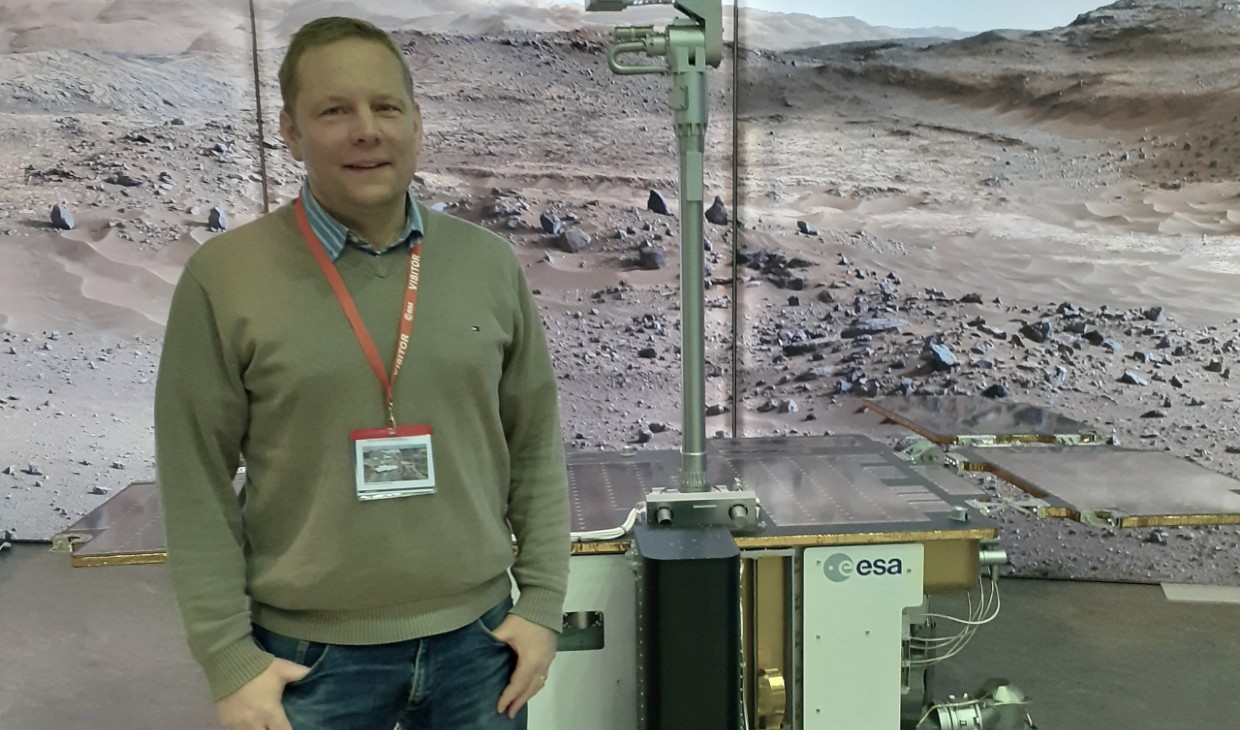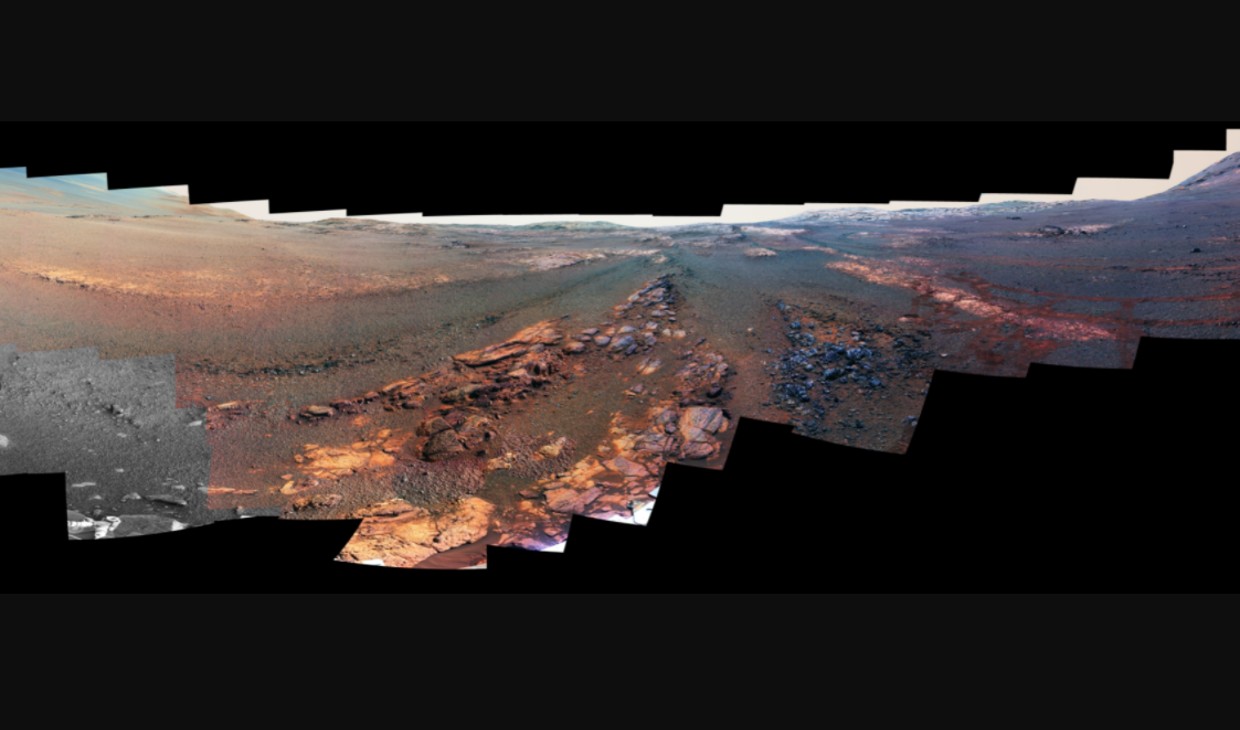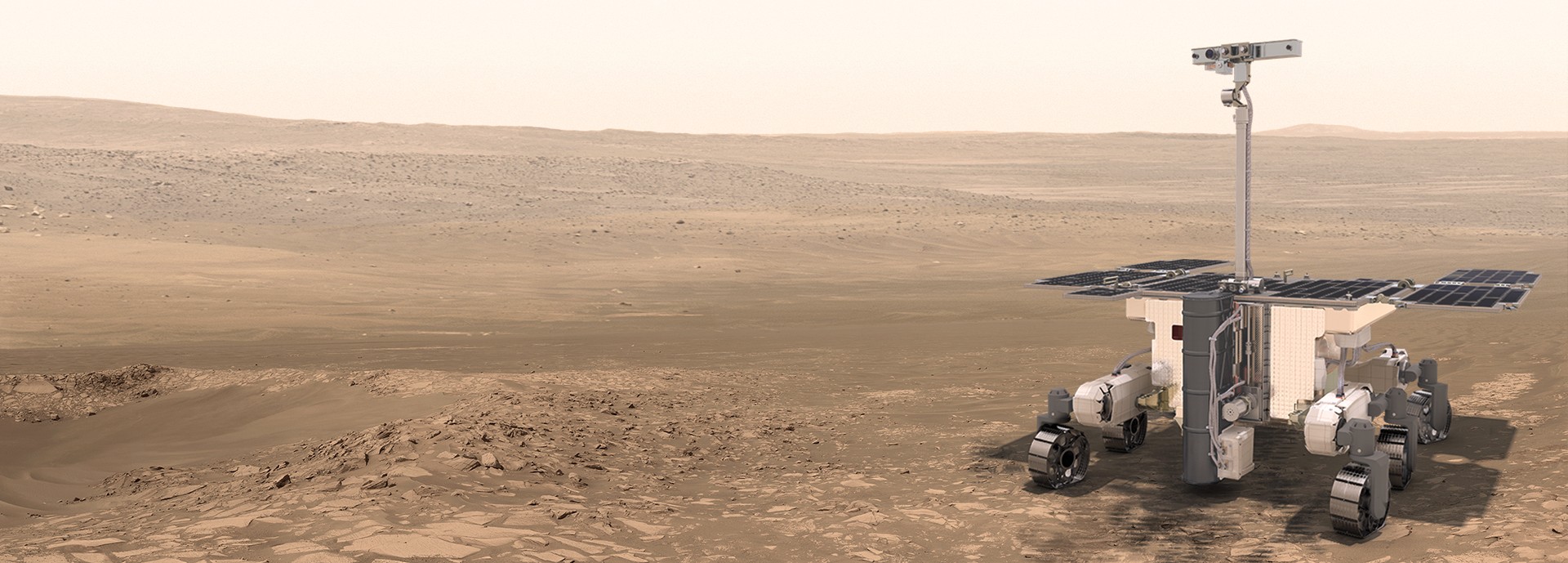A University of Stirling scientist has been chosen to join the team piloting the European Space Agency’s Mars rover when it launches next year, on its mission to find life on the Red Planet.
Dr Christian Schröder is one of five Guest Investigators, joining five Interdisciplinary Scientists from Europe, Russia and Canada, who will play a leading role in commanding the European-Russian ExoMars Rosalind Franklin rover as it launches in September 2022.

Dr Schröder with a model of the ExoMars rover
Once it lands at the selected site of Oxia Planum on Mars in June 2023, the rover will spend a minimum of 211 ‘sols’ (Martian days), equivalent to 230 Earth days, searching for organic carbon molecules that could tell us whether there was ever life on Mars.
The Rosalind Franklin rover is the first to carry a drill long enough to explore molecules up to two metres below the surface, where they would be protected from the harsh radiation on the planet’s surface.
Was there independent life on Mars?
Dr Schröder was part of the team operating NASA’s twin Mars exploration rovers, Sprit and Opportunity, from 2003 to 2019. The mission established the past presence of liquid water on the Martian surface – the most important prerequisite for life. Dr Schröder said: “Over the last two decades we have learned that there was plenty of liquid water on Mars more than 3.5 billion years ago – at that time, Earth and Mars were very similar and life was already well established on Earth.

Panoramic shot from NASA's Opportunity rover
“So it’s conceivable that there was life on Mars, too. But even if we find the right signs, was that life independent of life on Earth? Or was it the result of meteorite exchange between Earth and Mars?
“If it was independent – and life originated twice within our solar system- then the universe could be swarming with life. If not, that would be less likely.”
Drilling to find carbon molecules
A senior lecturer in Biological and Environmental Sciences, Dr Schröder’s expertise spans Earth Sciences and Planetary Exploration. He is specifically interested in the interaction between iron minerals and carbon molecules, which can give an indication of the kind of life there might have been.
He said: “Radiation destroys the organic molecules on and near the surface so it’s important that, for the first time on a rover, ExoMars 2022 has a drill that can go two metres underground.
European Space Agency images from the Mars Terrain Simulator in Turin, Italy, showing what the PanCam mounted on the Rosalind Franklin rover might see.
“On Earth, carbon storage in soils and sediment is facilitated by iron minerals. This is important because this carbon does not end up in our atmosphere as CO2 adding to global warming. On Mars, the same process can preserve organic carbon molecules over long timescales, and the iron minerals may therefore help us to find signatures of potential past life.”
Operating the rover
Once the Rosalind Franklin has landed, Dr Schröder will be based at the Rover Operation Control Centre in Turin, Italy, where the team will guide the rover over the surface of Mars.
The rover carries nine scientific instruments to locate the best sites for drilling and analyse the retrieved samples. Dr Schröder will be part of the team operating the eyes of the rover – the Panoramic Camera, or PanCam, developed by University College London - and the Raman Laser Spectrometer, built by the Spanish Astrobiology Centre and the University of Leicester, which identifies minerals and carbon in the drill cores.
He said: “This mission has been in the making for a long time and it will be great to see it finally take off, and significant to be in a leading role when that happens.”
Whilst at the University of Mainz in the early 2000s, Dr Schröder helped to develop the miniaturised Mössbauer spectrometer, MIMOS II, for the NASA missions. He joined the University of Stirling in 2013.

